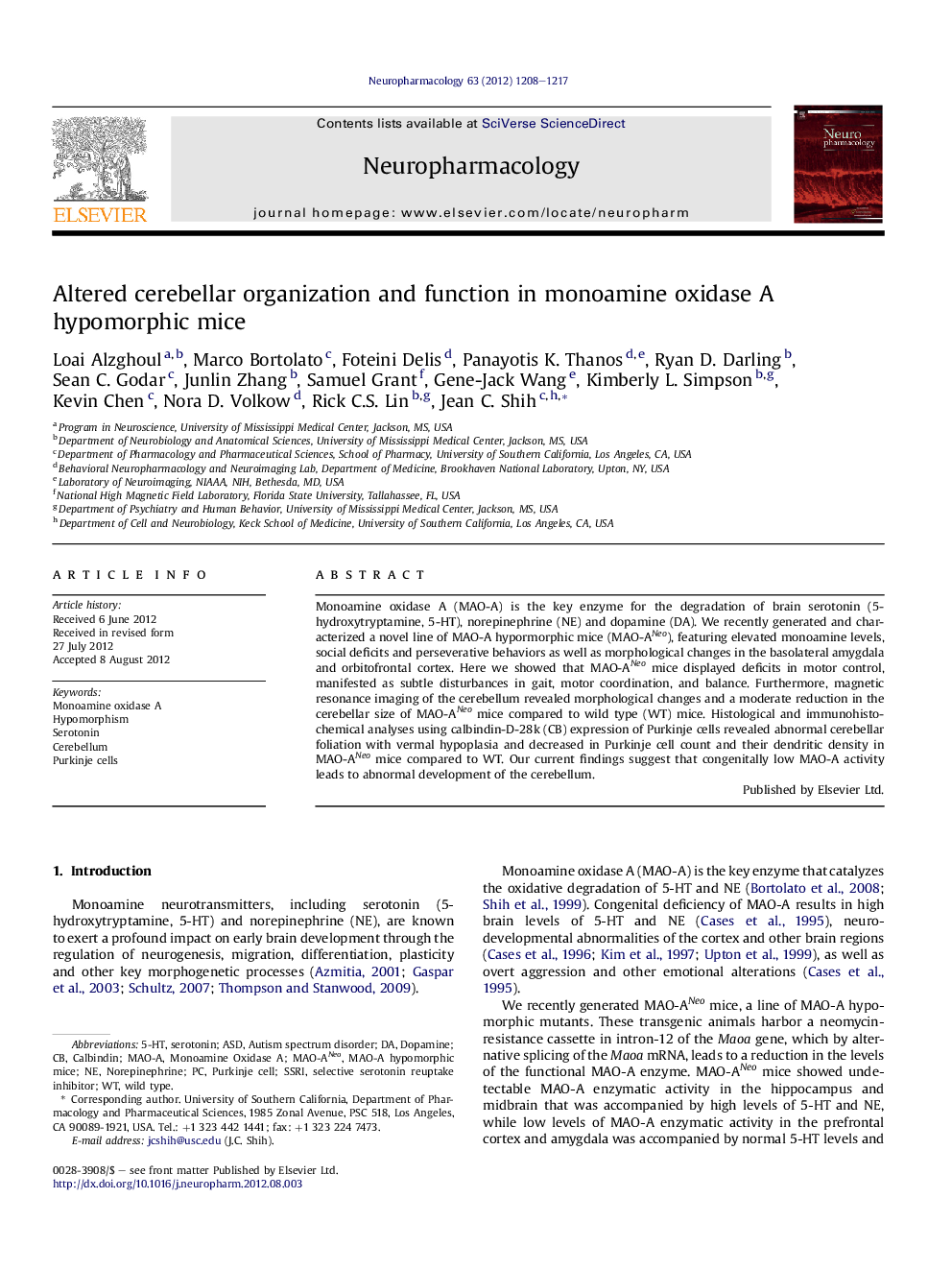| Article ID | Journal | Published Year | Pages | File Type |
|---|---|---|---|---|
| 2493671 | Neuropharmacology | 2012 | 10 Pages |
Monoamine oxidase A (MAO-A) is the key enzyme for the degradation of brain serotonin (5-hydroxytryptamine, 5-HT), norepinephrine (NE) and dopamine (DA). We recently generated and characterized a novel line of MAO-A hypormorphic mice (MAO-ANeo), featuring elevated monoamine levels, social deficits and perseverative behaviors as well as morphological changes in the basolateral amygdala and orbitofrontal cortex. Here we showed that MAO-ANeo mice displayed deficits in motor control, manifested as subtle disturbances in gait, motor coordination, and balance. Furthermore, magnetic resonance imaging of the cerebellum revealed morphological changes and a moderate reduction in the cerebellar size of MAO-ANeo mice compared to wild type (WT) mice. Histological and immunohistochemical analyses using calbindin-D-28k (CB) expression of Purkinje cells revealed abnormal cerebellar foliation with vermal hypoplasia and decreased in Purkinje cell count and their dendritic density in MAO-ANeo mice compared to WT. Our current findings suggest that congenitally low MAO-A activity leads to abnormal development of the cerebellum.
► The cerebellar organization of hypomorphic MAO-A mutant mice was examined. ► Behavioral analyses revealed gait and postural disturbances. ► Cerebellar vermis hypoplasia and decreased Purkinje cell density was also noted. ► Cerebellar neuropathology implicated in motor and non-motor abnormal behaviors.
